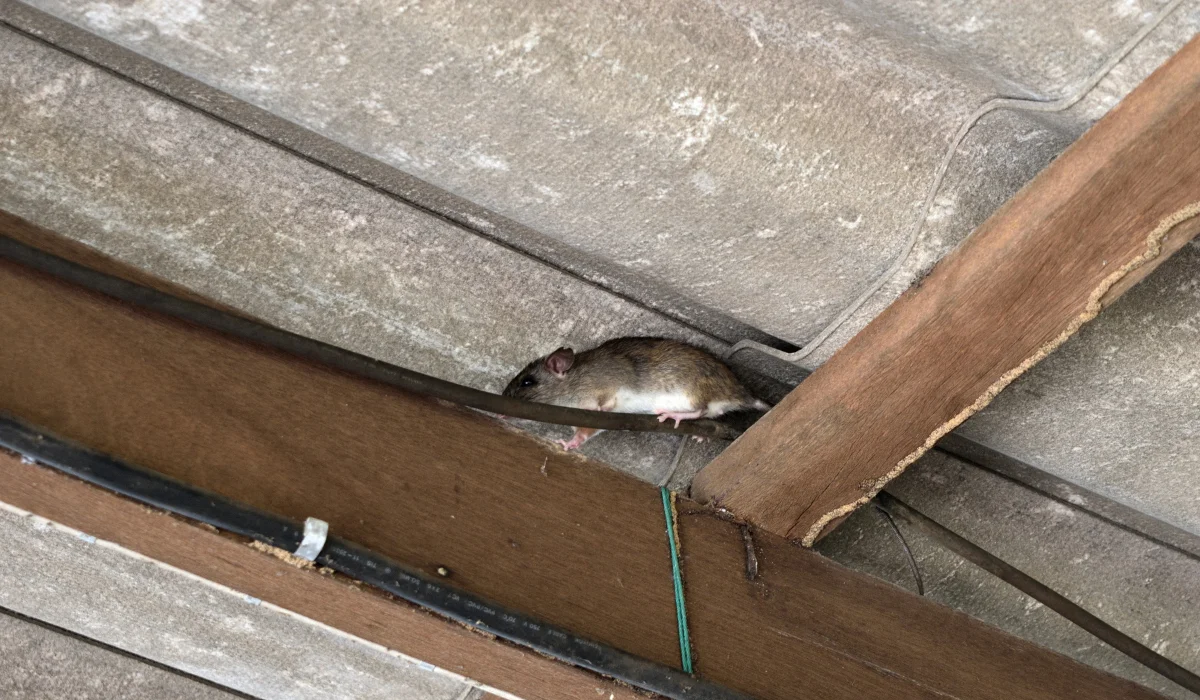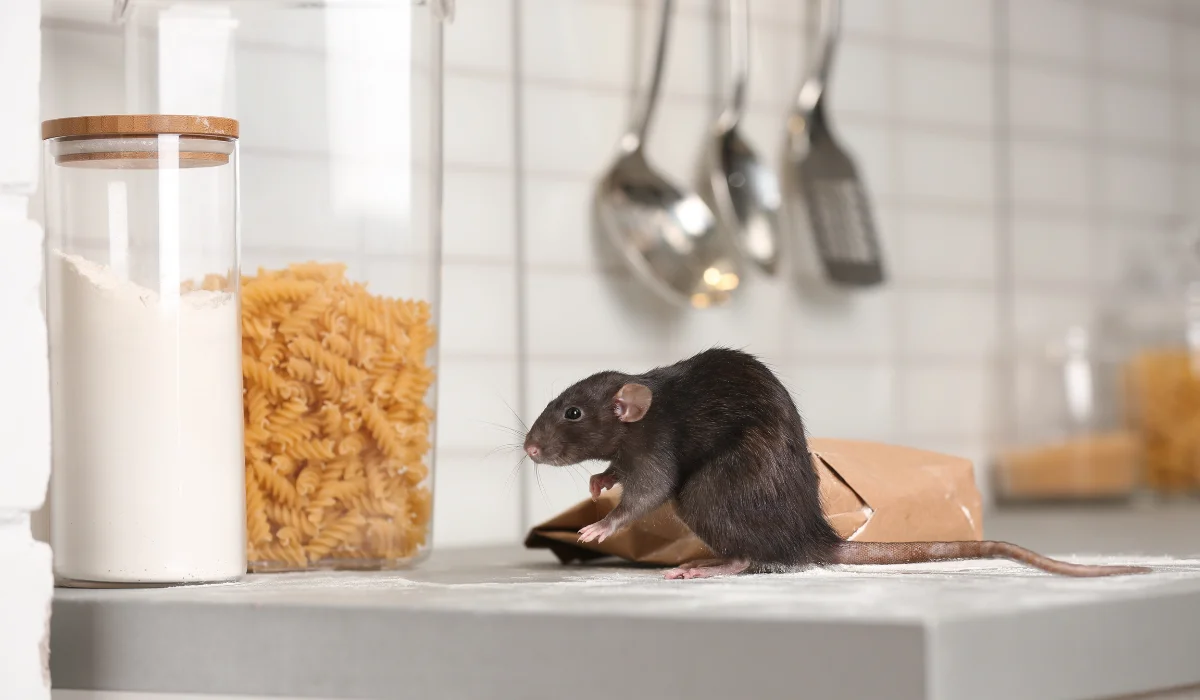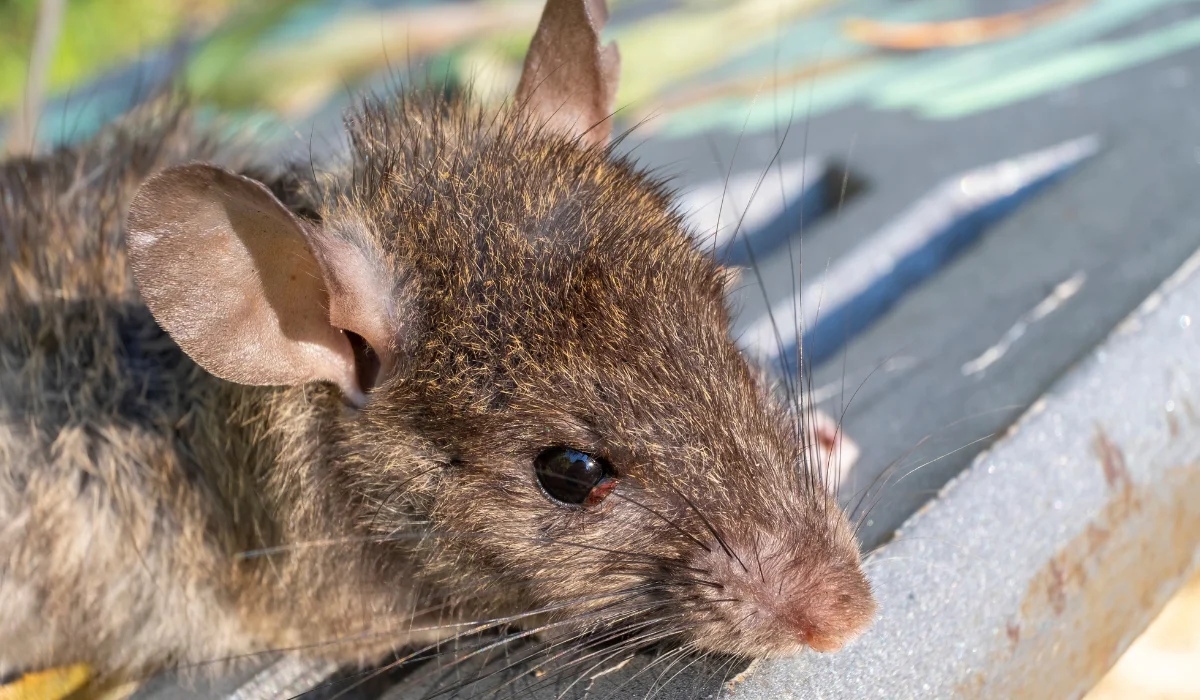Finding mice droppings in your home can be unsettling. These dark, rice-shaped pellets clearly show that mice are present. Louisiana’s warm climate attracts rodents, so spotting droppings early helps prevent a severe infestation.
Homeowners in Thibodaux, Houma, and throughout southern Louisiana often find mouse droppings in pantries, attics, or along baseboards. Knowing how to recognize, clean, and respond to droppings keeps your living space safe from health risks.
This guide explains how to recognize mouse droppings, clean them safely, and when to call professional pest control.
Key Takeaways
• Mouse droppings are small, dark pellets that signal an active infestation.
• Safe cleanup requires protective gloves, disinfectant, and disposal in a sealed plastic bag.
• Droppings can spread disease like hantavirus, making professional pest control the safest solution.
• Sealing entry points and removing food sources helps prevent future rodent infestations.
What Mouse Droppings Look Like
Mouse droppings are dark brown or black, about the size of rice grains. Fresh ones look shiny and moist, while older droppings turn gray and crumble. A single mouse leaves dozens each day, quickly forming piles.
It’s also important to know the difference between mouse and rat droppings. Rat droppings are larger, often three times the size, while mouse poop remains small and pointed at the ends.
Where to Find Mouse Droppings in the Home
The best way to find mouse droppings is to check areas where food and shelter are easy to access. Pantries, cabinets, and pet food storage areas are common targets. You may also discover rodent droppings in crawl spaces, attics, or near water heaters where house mice seek warmth.
Mice often leave droppings along walls, baseboards, and behind appliances. Gnaw marks or shredded nesting materials like paper, cardboard, or insulation are also strong signs. Even a small cluster of droppings usually means more mice are nearby.
Health Risks Linked to Rodent Droppings
The CDC warns that deer mouse droppings may carry hantavirus, a dangerous respiratory illness. In addition, rodent urine and droppings can contaminate food sources and surfaces, increasing the risk of disease.
Never sweep or vacuum droppings, since this releases harmful particles into the air. Instead, spray them with disinfectant and clean them safely.
How to Safely Clean Up Mouse Poop
Always wear rubber gloves when cleaning mouse droppings, and use a respirator if the infestation is heavy. Spray droppings with disinfectant or a bleach solution (one part bleach to ten parts water) and let it sit for five minutes. Wipe with paper towels, seal them in a plastic bag, and place them in an outdoor trash bin. Disinfect the area again and wash your hands.
If droppings keep appearing, it means an active mouse infestation, and you should call pest control.
Signs of a Mouse Infestation Beyond Droppings
While droppings are the most obvious clue, they’re not the only signs of mice. Listen for scratching in walls or ceilings, especially at night. Look for gnaw marks on food packaging, wires, or wood. You might also notice a musty odor caused by rodent urine.
A mouse nest made from shredded paper, fabric, or insulation is another clear sign of infestation. Finding many droppings means the problem involves more than one mouse. At this stage, you’ll need to set traps or bring in professional rodent control.
How to Prevent Future Droppings in Your Living Space
After cleanup, the next step is prevention. Seal all possible entry points with steel wool or caulk, especially around doors, windows, and utility lines. Store food in sealed containers and keep pet food picked up at night.
Mice look for warmth and shelter, so inspect crawl spaces, attics, and garages for gaps. Avoid storing blankets or clothing in flimsy plastic bags, as mice can chew through them. Heavy-duty storage bins are safer. Keeping your home clean and limiting access to food sources makes it harder for rodents to thrive.
Professional Pest Control for Mouse Infestations
If you’re dealing with ongoing droppings, it’s time to call a professional. DIY methods like snap traps or glue traps may catch a few mice, but they won’t solve the infestation. Worse, a dead mouse in an inaccessible area can leave behind odor and flies.
LaJaunie’s Pest Control serves southeastern Louisiana, including Baton Rouge, New Orleans, and Houma. Our technicians identify entry points, eliminate nests, and provide long-term rodent control solutions.
Making the Right Pest Control Choice for Louisiana Homes
Living with mice is stressful and can quickly get worse without action. The best solution is to work with a local expert who understands Louisiana rodent problems.
LaJaunie’s Pest Control offers customized solutions that remove mice and keep them from coming back. With same-day service and our retreat guarantee, you can be confident your home is protected.
Call us today to schedule your inspection.
FAQs
How do I know if I’ve found mouse droppings or rat droppings?
Mouse droppings are small, dark, and pointed at both ends, about the size of grains of rice. Rat droppings are much larger and blunt at the ends.
Is it safe to vacuum mouse droppings?
No. Vacuuming or sweeping mouse droppings can release harmful particles into the air. Instead, spray with disinfectant, wipe with paper towels, and dispose of droppings in a plastic bag.
When should I call a pest control company for mice?
If you continue to find fresh droppings daily, hear scratching in walls, or notice nests, it’s time to contact a professional exterminator like LaJaunie’s Pest Control.
 By: LaJaunie's Pest Control
By: LaJaunie's Pest Control 



